Filipino designers take center stage at the Vin d’Honneur
Twice a year, Malacañang opens its doors for its two biggest and grandest receptions. The Vin d’Honneur, which means “wine of honor” in French, happens in January to welcome a new year, and in June to celebrate Philippine Independence. More than a social custom, the Vin d’Honneur is also a diplomatic event where ambassadors posted in the Philippines get to spend time with the First Family and other government officials.
In a splendid fusion of style, culture, and diplomacy, today’s Vin d’Honneur has an added layer of interest. The nation’s beloved national dress takes center stage, epitomizing the essence of Filipino identity and celebrating the rich tapestry of Philippine fashion heritage. Under the guidance of the country’s First Lady, Louise Araneta-Marcos, each female ambassador stationed in Manila has been paired with a distinguished Filipino designer, showcasing their extraordinary creations at the event.
By pairing each female ambassador with a Filipino designer, the project intertwines diplomacy with fashion, fostering cultural exchange and promoting Filipino talent on an international stage. The significance of this project lies not only in its celebration of the terno as a symbol of national identity but also in its promotion of the Filipino fashion industry. Many Filipino designers are known for their ability to blend traditional elements with contemporary aesthetics, resulting in captivating ensembles.
Avel Bacudio for Colombia’s Ambassador Marcela Ordoñez
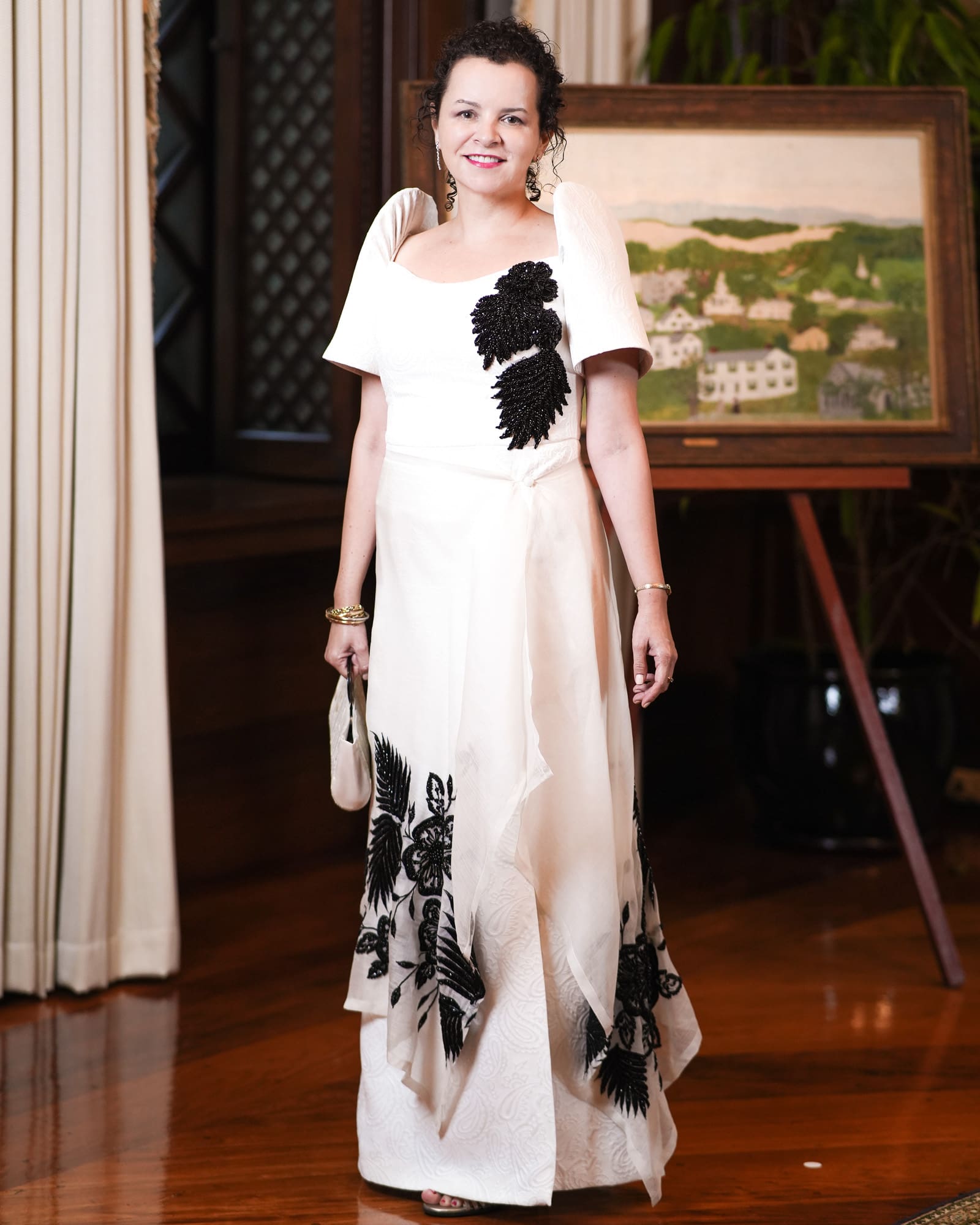
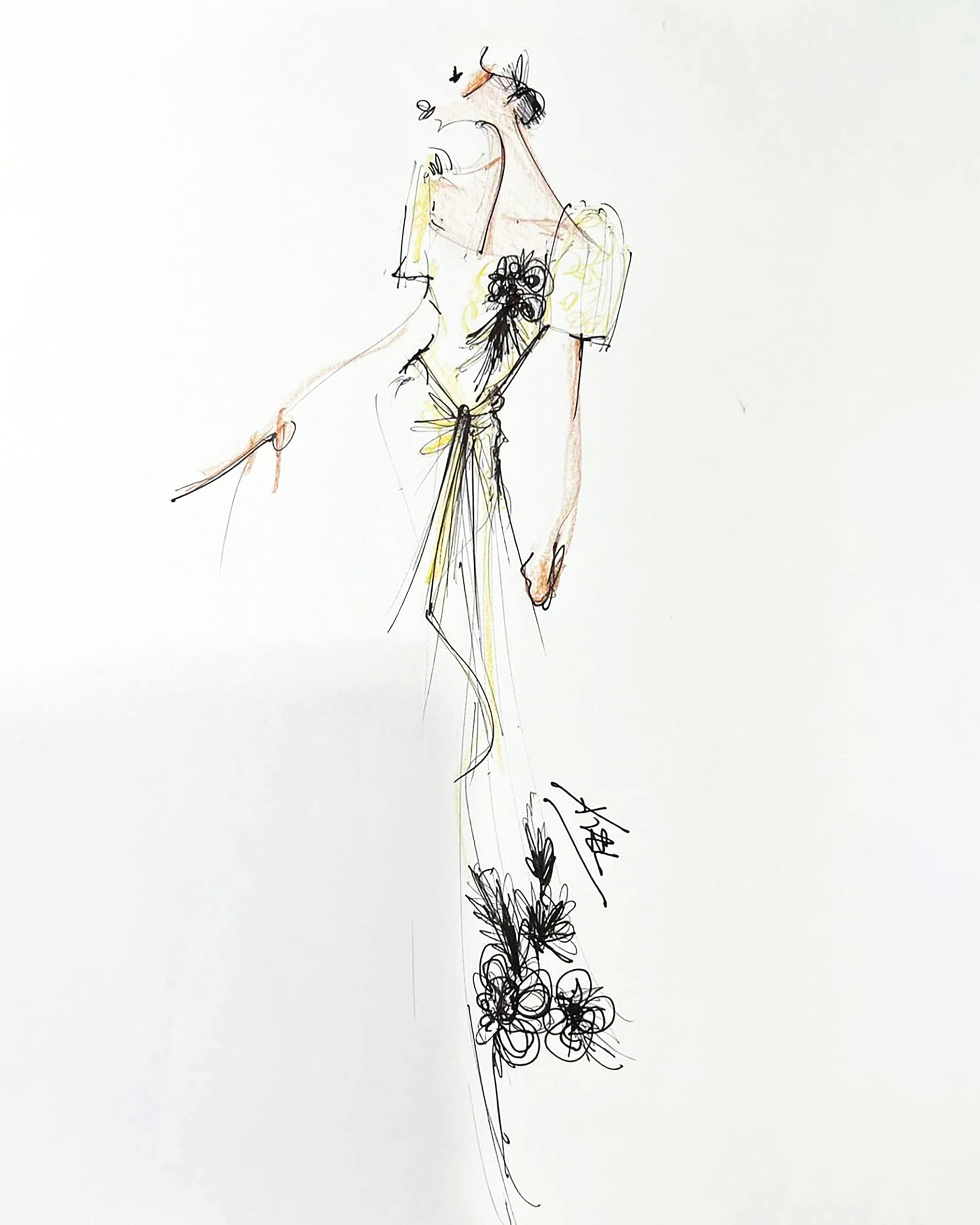
Bacudio drew inspiration from kalachuchi flowers and anahaw leaves to create the dress for Colombian Ambassador Marcela Ordoñez. The terno incorporates sand-colored brocade and piña. “For many people, kalachuchi flowers have deep spiritual meaning. Some even believe that they symbolize life and immortality,” Bacudio says.
Ambassador Ordoñez, who admits to having a love affair with Filipino fabric since arriving in Manila, has binakol and abaca cushions all over her home. “I love the weaving in the Philippines. I also love the fact that it comes from natural fibers and therefore fosters a circular economy,” she says.
The ambassador is thrilled to finally wear the terno. “I have never worn a dress as elegant as the one Avel Bacudio made,” she shares, adding that this project also allows her to learn about the proper way of wearing the national dress.
Rajo Laurel for Romania’s Ambassador Răduţa Dana Matache
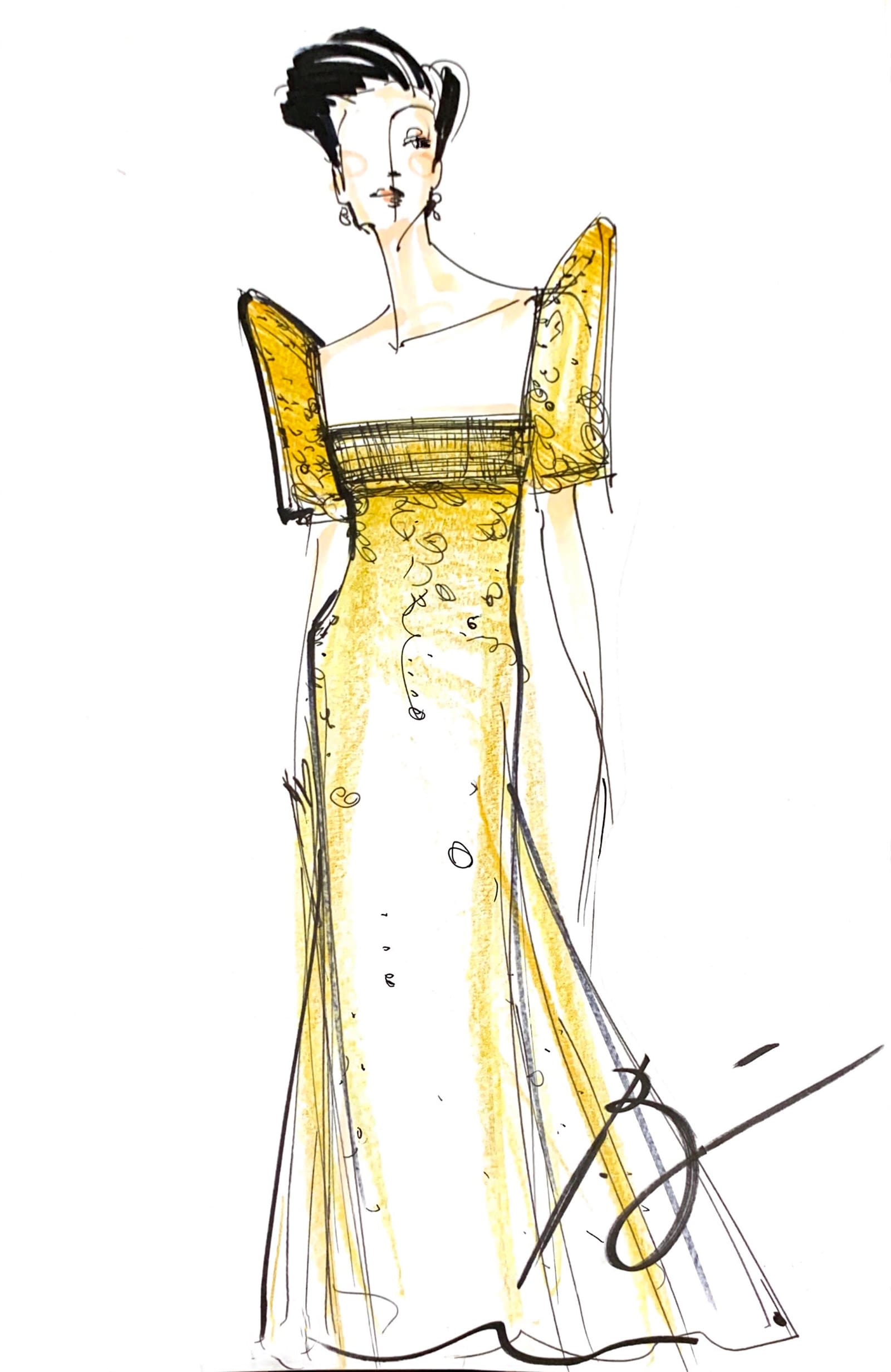
“I opted to create a classic terno in champagne and gold for her,” Laurel says about his design. The terno features a sheath silhouette in silk crepe and silk tulle, adorned with various Philippine flowers in dark gold and bronze. “I wanted to create something timeless for the ambassador as this will be the first time she will be wearing our Philippine national dress,” he adds.
For Laurel, dressing the ambassador for the event is deeply meaningful. “It is one of the best ways to express our diplomacy and friendship to all the nations in the world.”
Ivar Aseron for Australia’s Deputy Chief of Mission, Dr. Moya Collett


Aseron chose green and beige for Dr. Collett’s terno, representing the national colors of Australia. Overlaying green fabric with sheer leaf patterns, Aseron notes how Australia’s Deputy Chief of Mission also loves how the green complements her complexion and finds the design comfortable to wear, something that truly matters to the designer.
“The national dress represents a part of our culture, and wearing it is like getting a cultural immersion for a non-Filipino who is an honored guest,” he says. “The challenge for me is to make the experience both comfortable and memorable.”
Dennis Lustico for Hungary’s Ambassador, Dr. Titanilla Tòth

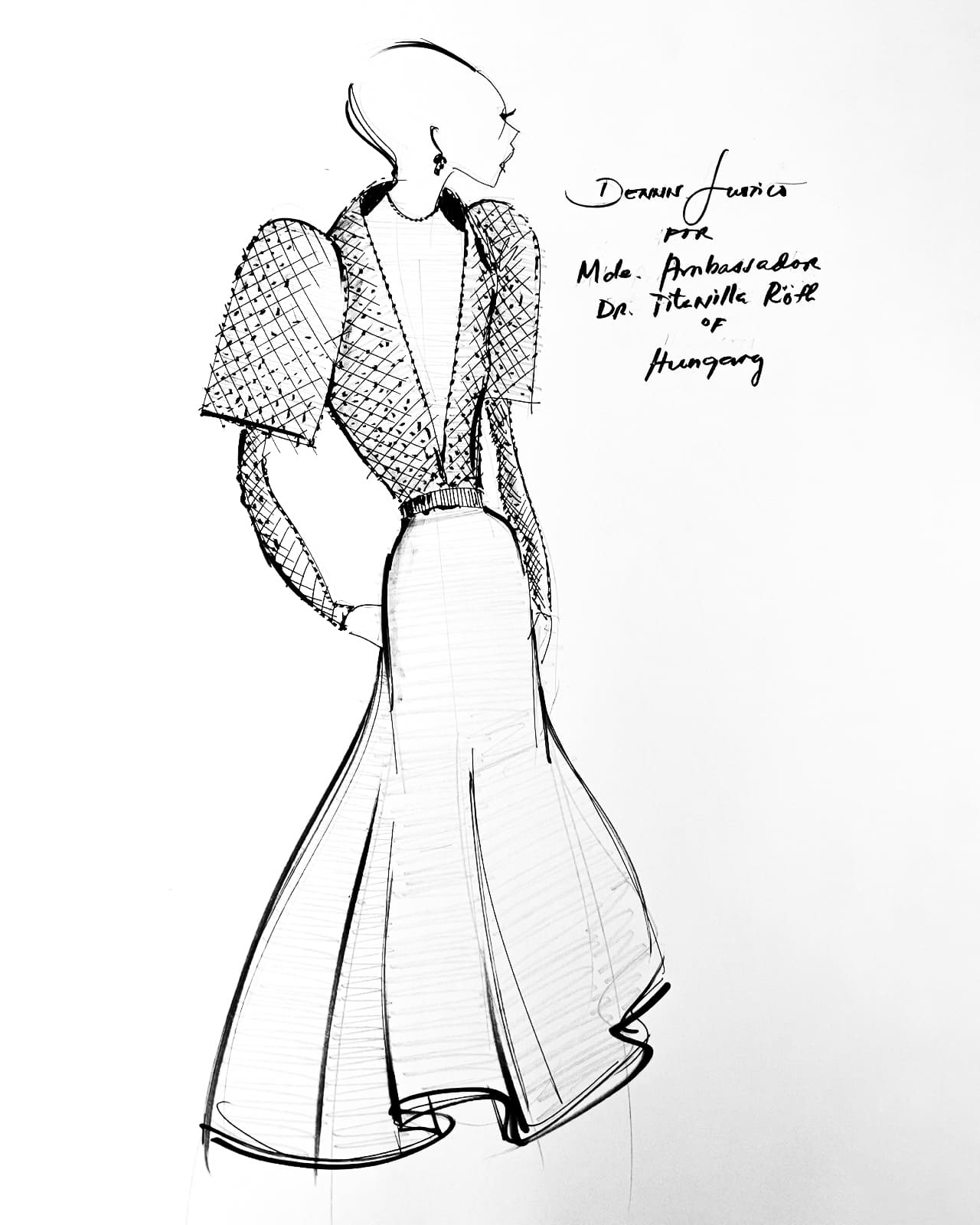
The black terno Lustico made for Ambassador Tòth is inspired by one of his recent Ternocon collections. The embroidered, dotted black-and-white dyed piña has a built-in panuelo. Lustico says the color choice complements the ambassador’s complexion and her openness to try something new and adventurous.
This isn’t the ambassador’s first time wearing Filipiniana. For the last Vin d’Honneur, she used textile from Ilocos given by the President and used it to create a dress with traditional Hungarian elements. “Now, I will wear a full Filipiniana design,” she says with a smile.
Lustico, meanwhile, is thankful for the opportunity. “I’m thankful that First Lady Liza Araneta-Marcos is a very strong supporter of local arts and fashion,” he says. “She is as proud as we designers are of our local fabrics, materials, and weaving industry… I truly hope that this is the start of an even more active textile and fashion collaboration that will lead to the drawing of a roadmap to finally establish a true and sustainable local textile and fashion industry.”
Joey Samson for Nigerian Ambassador Folakemi Ibidunni Akinleye

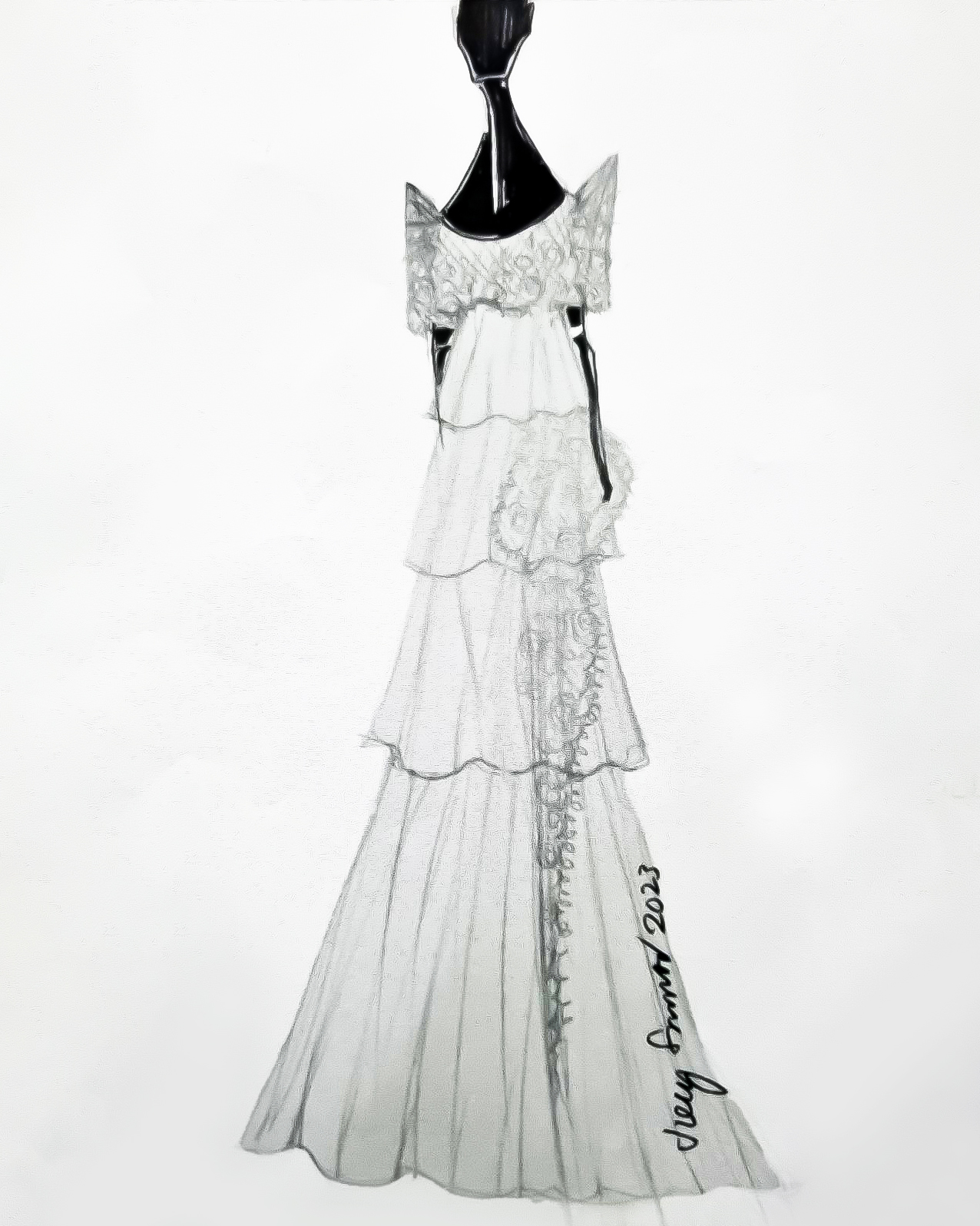
Samson and the ambassador agreed to create a dress that will merge Filipino and Nigerian cultures. Using piña and printed material from Nigeria provided by the ambassador, Samson created a terno top and stylized tapis. He also used embroidered piña with callado. “I picked up the colors of the printed material to add color to the embroidery,” Samson says.
A true collaborative effort, Samson shared how they started with five ideas for the ambassador’s terno before they were able to narrow it down to two and finally the one design she liked the most.
Philip Rodriguez for Papua New Guinea’s Ambassador Betty Palaso
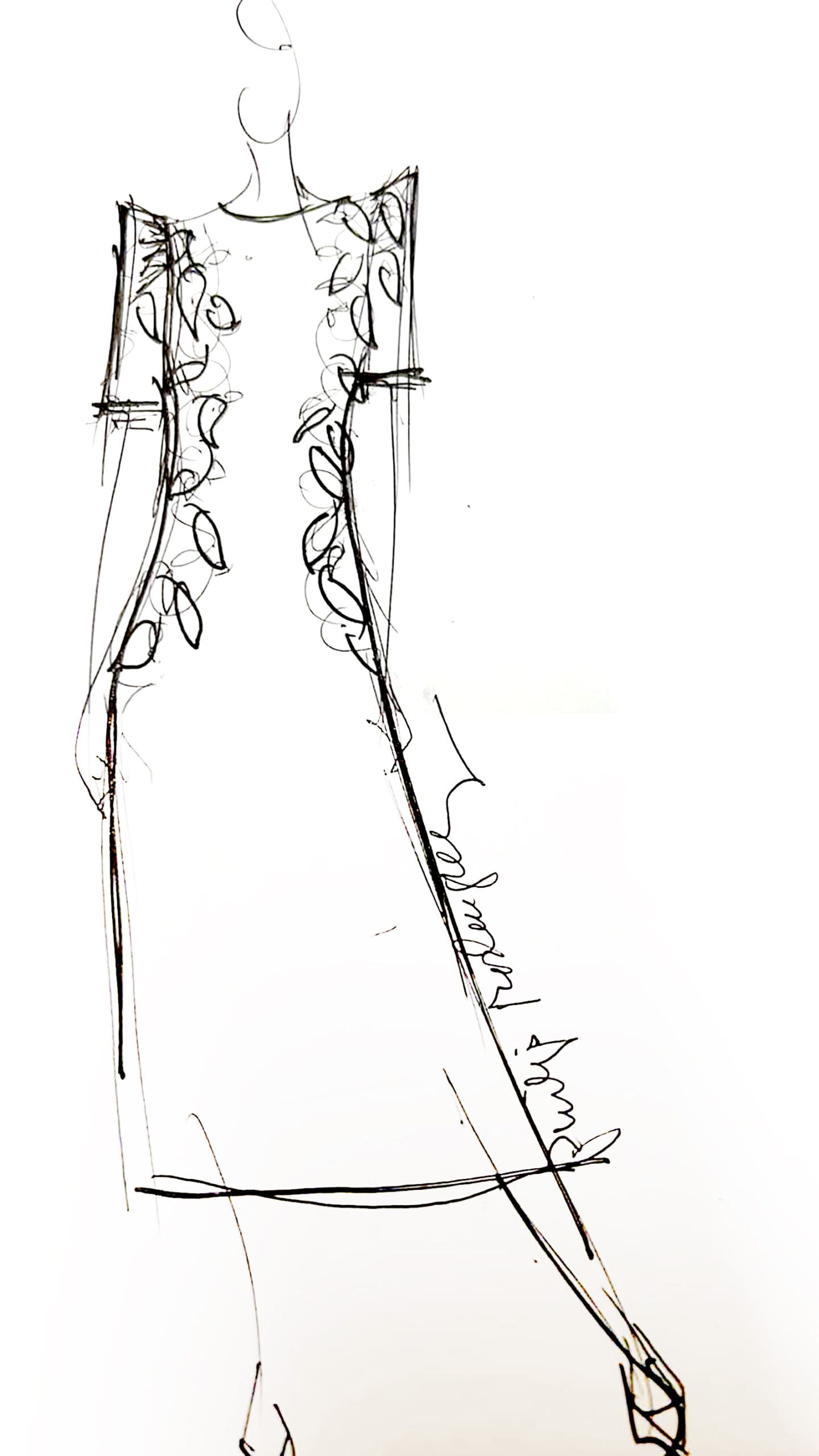
“Foremost in my mind is to take note of the request of the ambassador—that she wants it simple, easy to wear, and dignified,” Rodriguez shares. He chose a powdery blue silk gazar for the bodice and used piña seda for her terno sleeves to complement her complexion.
Rodriguez also added vine appliqués in the same color to symbolize peace and prosperity. “I’m so glad that she liked it and saw a smile and sparkle in her eyes,” he added about seeing the ambassador in a Filipino design. “To me, it is an honor to have the opportunity to dress up a diplomat and surprise her that the terno also suits her well.”
JC Buendia for Swedish Ambassador Annika Thunborg
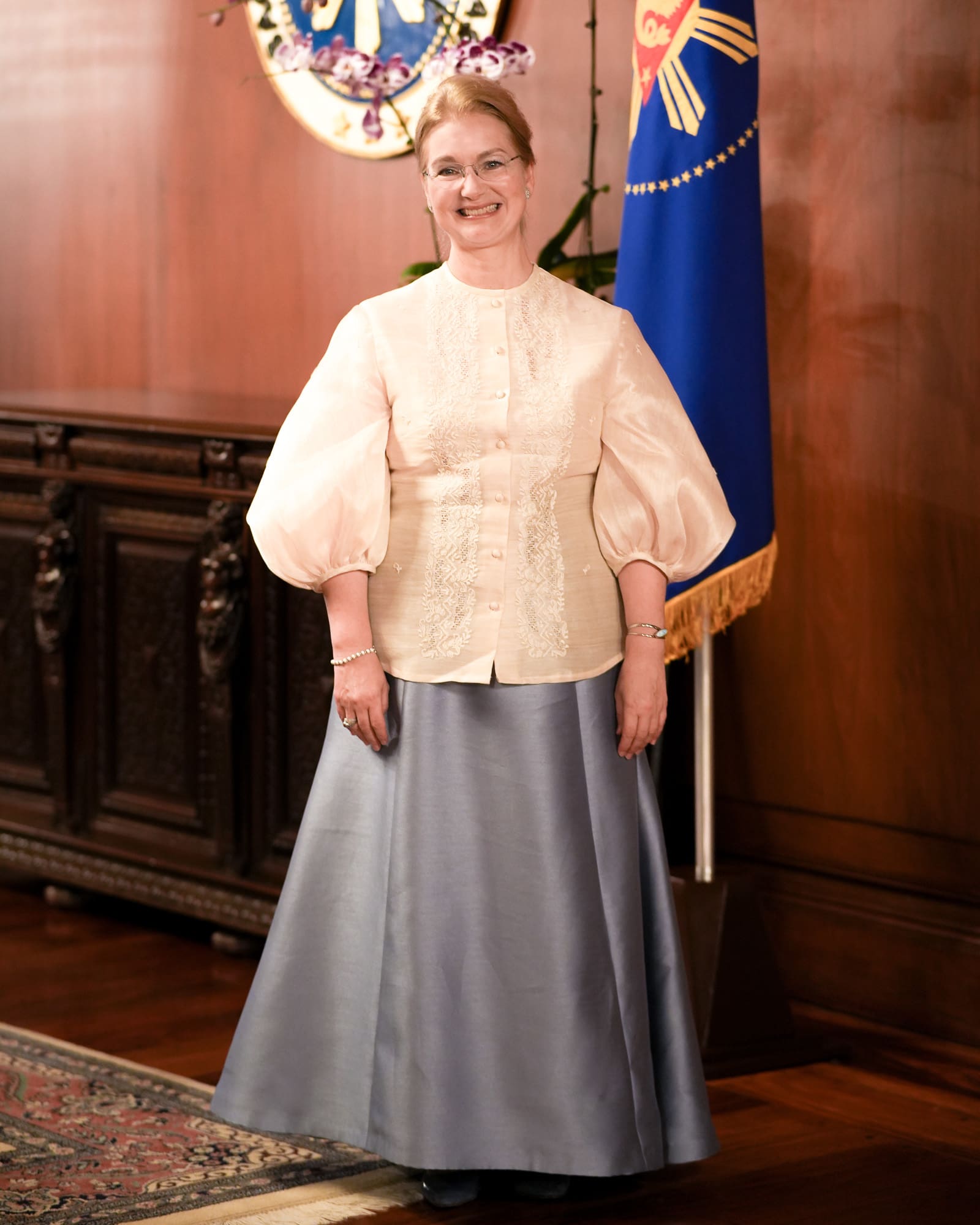
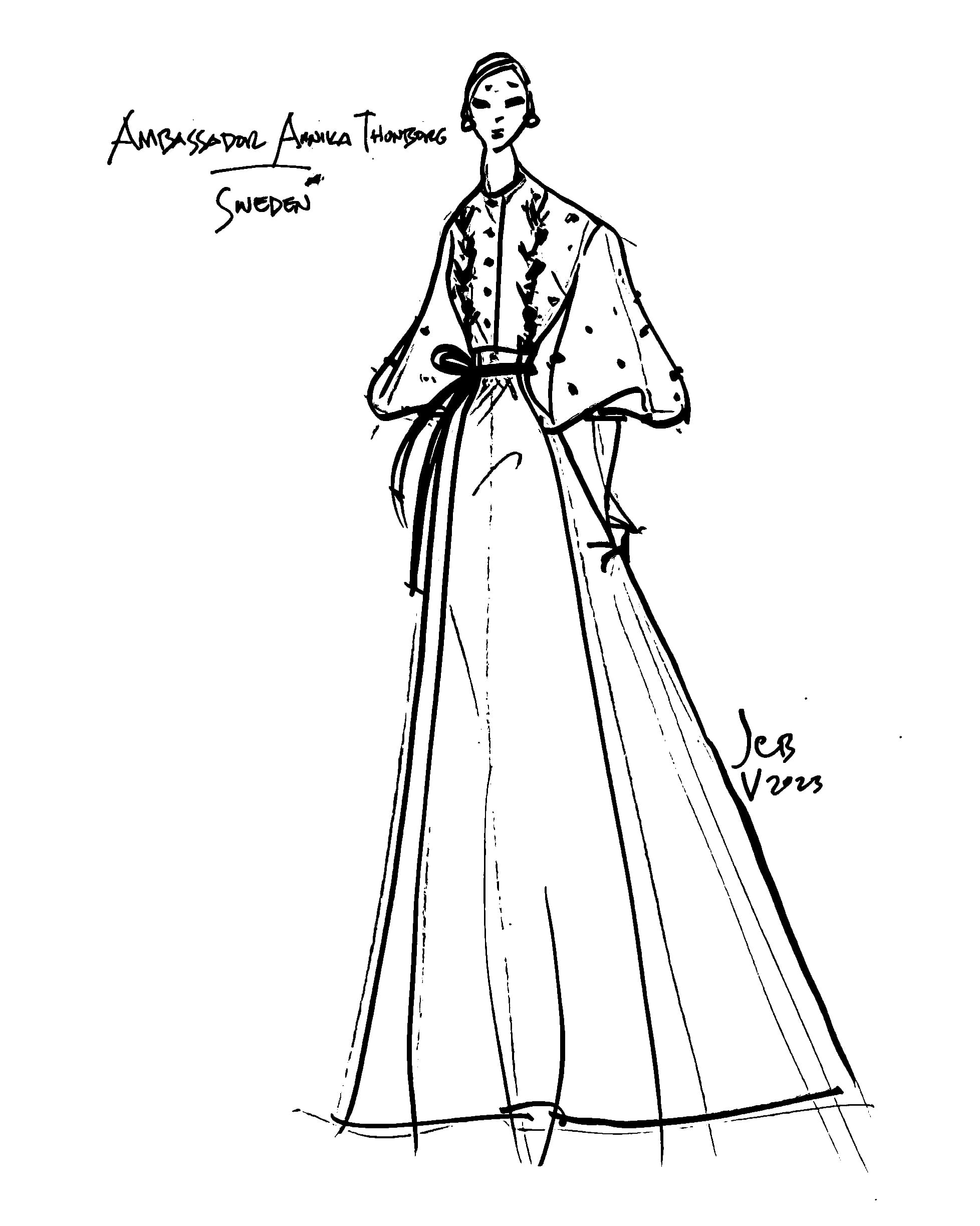
Both minimalists, Buendia and Ambassador Thunborg were a great match. The ambassador is also an advocate of sustainability, one of her country’s key points of focus. “She wanted something versatile so I made a two piece ensemble,” Buendia said, allowing for the ambassador to wear his work more than once. “The top is an interpretation of the barong in piña abaca from Catanduanes which I matched with a dusty blue Gazar skirt to match her blue eyes.”
For Ambassador Thunborg, the chance to wear Buendia’s design is a huge honor. “I am so glad if I can contribute to putting Philippine traditional fabrics, weaves, the art of embroidery, the art of design and the great people behind all this on the world map!”
Jun Escario for German Ambassador Anke Reiffenstuel
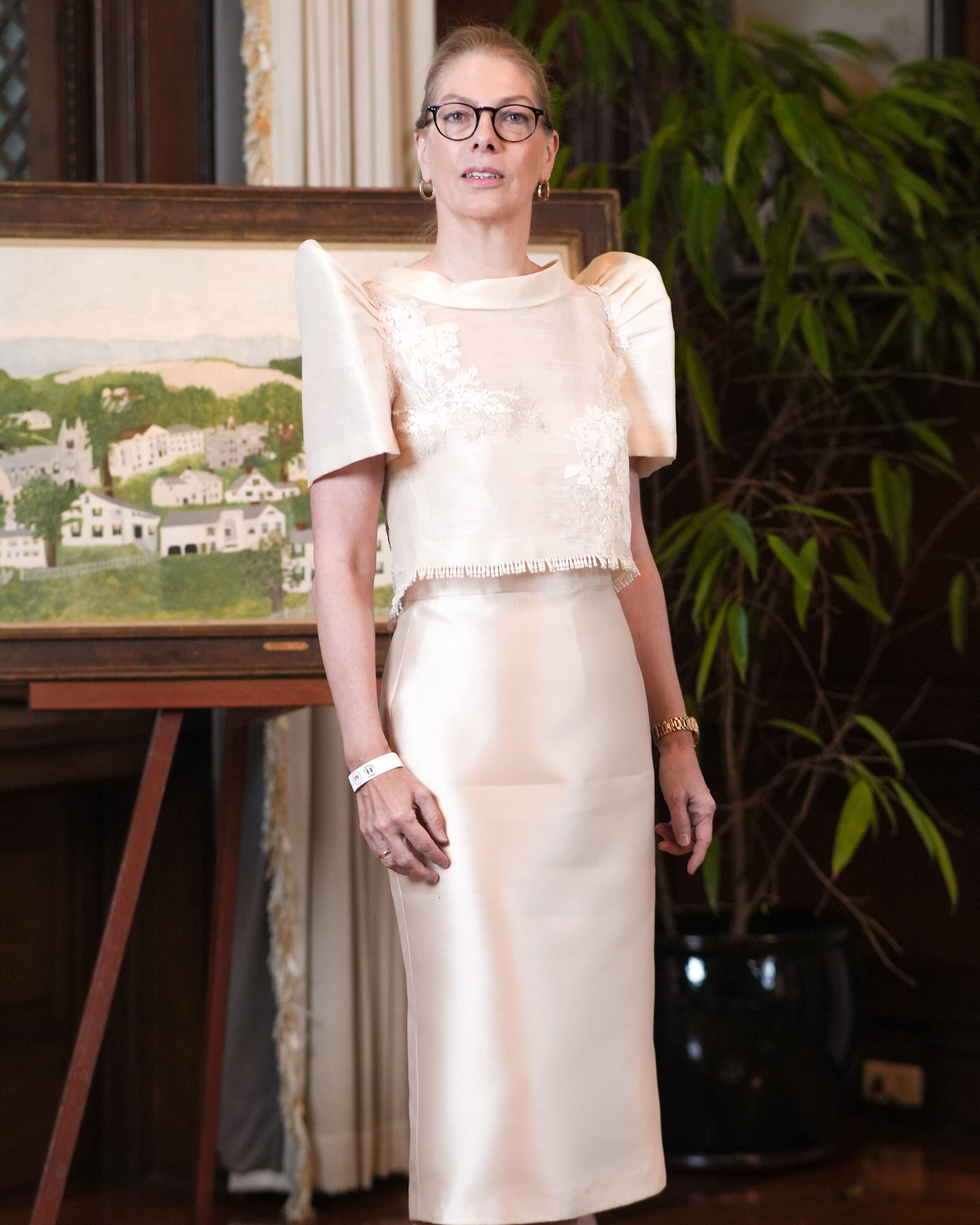
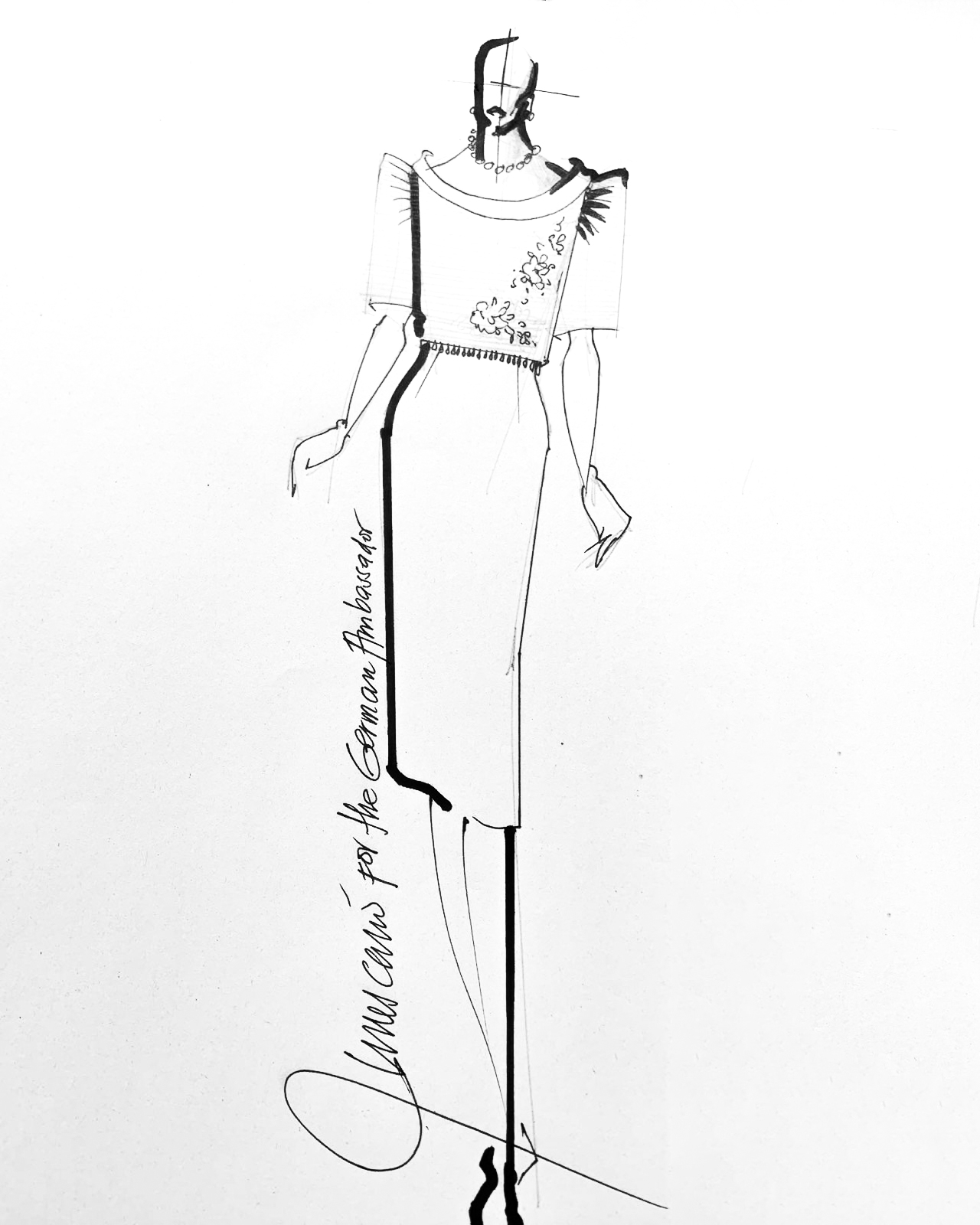
Taking the ambassador’s personality and preference for the classics into consideration, Escario designed a cowl neck terno top to be worn over a mikado column shift dress.
“This is a very special occasion because I’m leaving,” Ambassador Reiffenstuel, who is set to complete her tour of duty in July, says. “After four years, this is like a combination of being in the Philippines somehow being made a member of the Philippine community.” The terno top Escario made for her can also be worn in reverse for a different style, and the ambassador is already thinking of re-wearing it for the State of the Nation Address (SONA).
“I will be leaving the day after the SONA, so this really feels like the culmination of my tour of duty and this embrace by the Filipino community.”
Puey Quiñones for French Ambassador Michèle Boccoz
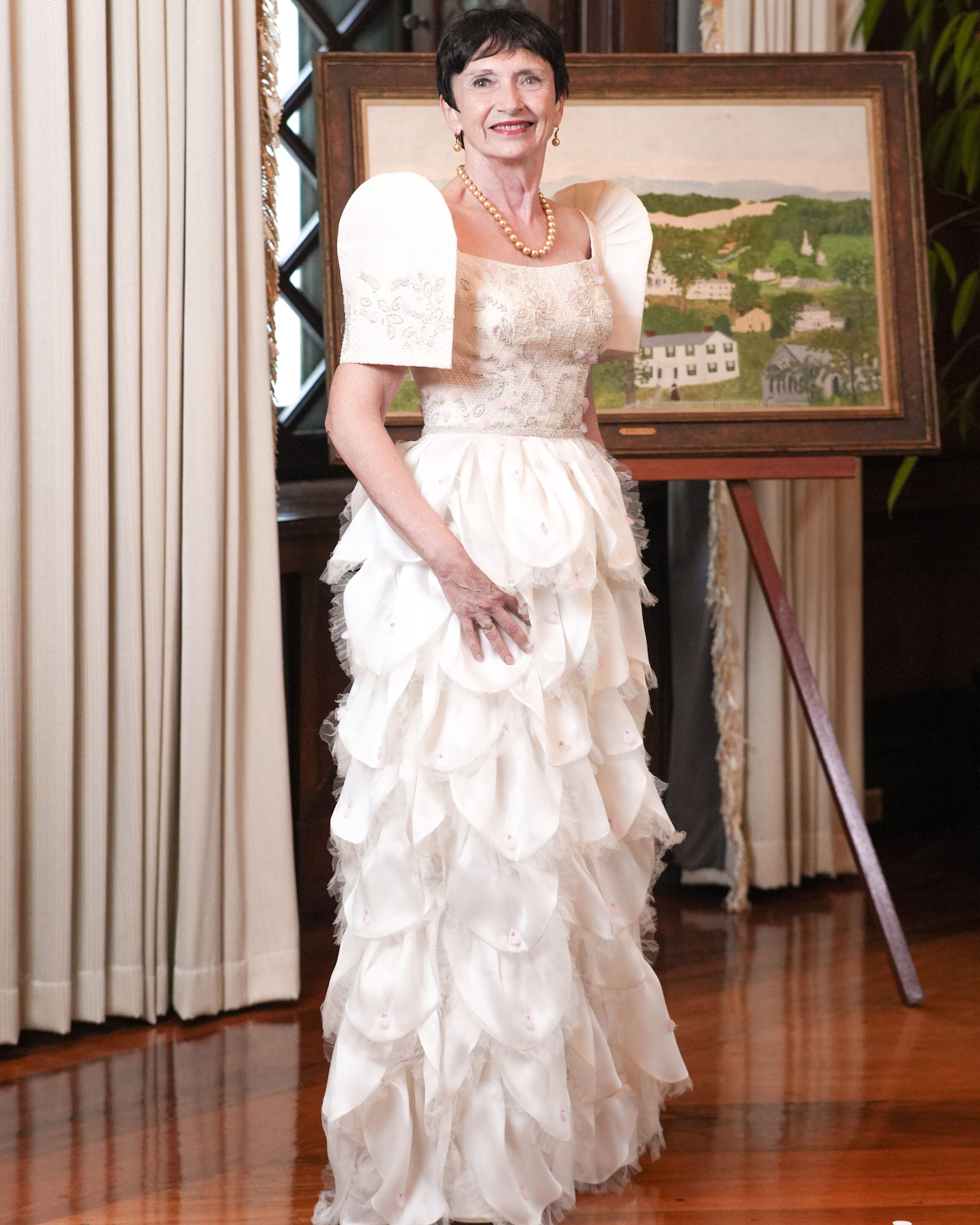

Quiñones designed a dress that incorporated the embellishment technique made popular by French fashion house Christian Dior into a Filipino design. “The ambassador is the perfect muse—chic, open, and elegant,” Quiñones says.
Ambassador Boccoz had a few requests. She wanted a nice cut, quality materials, and not too many frills. Quiñones endeavored to deliver on all counts. “It’s really special because, well, first of all, we’re going to wear it on Independence Day in a very official manner, and it’s part of a project that the First Lady initiated,” she adds while visiting the opening of Likha 2. “I’m very happy to do that because I believe that there is so much talent in this country. I mean, look around here [at Likha], it’s absolutely amazing weaving, pottery, and everything—you name it, it’s there, and it’s so beautiful.”
Michael Leyva for British Ambassador Laure Beaufils

Ambassador Beaufils will not be wearing Leyva’s design at the Vin d’Honneur. Instead, Leyva’s creation will be worn by the ambassador at Buckingham Palace during an audience with King Charles III with other British ambassadors on Tuesday, 13 June.
“The Philippines is my home too, and I am very proud that I can show a part of it to the UK,” the ambassador said. Leyva created two designs for the ambassador. One is a modern Maria Clara with a panuelo made of pina cloth. The other is a red terno made of French lace. “I wanted to make and try two different looks on her, and I wanted her to wear something that she wanted—something that feels like she’s ‘it’ in that particular dress.”
The ambassador went with the Maria Clara, which thrilled Leyva as it will also be a chance to showcase Filipino fabric at Buckingham Palace.
Milka Quin for Dutch Ambassador Marielle Geraedts

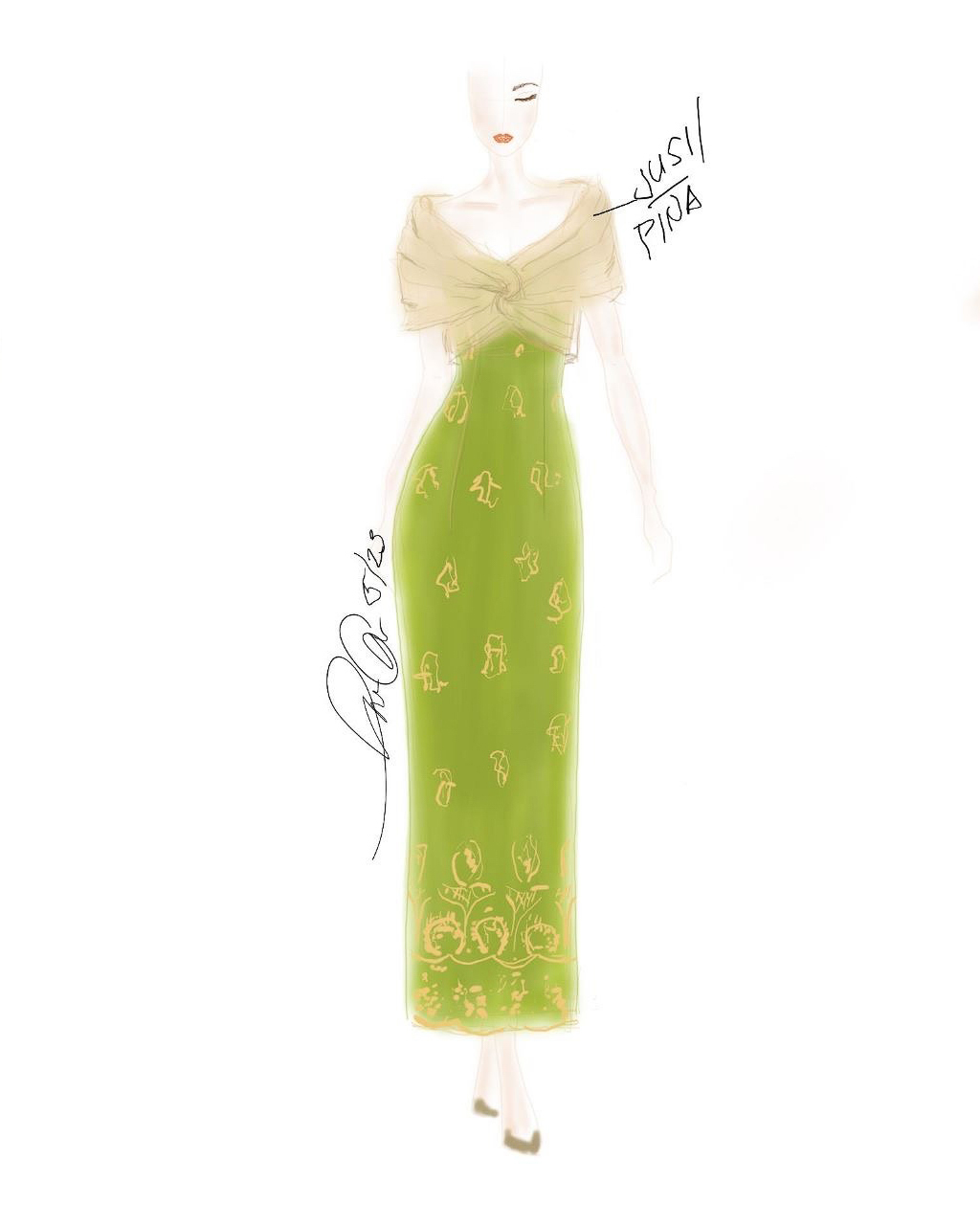
Quin created a two-piece, modern Filipiniana for Ambassador Geraedts. It features a corseted, strapless column gown in bright, chartreuse silk with embroidered details similar to callado and golden beige flourishes on the hem. She paired the gown with a bolero made of jusi silk and piña, a modernized Maria Clara-style panuelo with twisted fabric at the center.
“The ambassador wanted to wear a simple silhouette,” Quin says “She wanted an uncomplicated dress that is versatile and comfortable. I am always an advocate of outfit repeats, so I gave her the option of a two-piece garment in a chic silhouette.”
Ambassador Geraedts, meanwhile, shares her thoughts on Quin’s expertise and talent. “The way she would drape and fold the fabric was just marvelous,” she says. “It was practically perfect even just on our first fitting. We only had to do minor alterations”
For Quin, the project is a great opportunity, not just for the designers, but for the ambassadors to enjoy the feeling of wearing Filipiniana. “This means more people would want to use them more often and take out the notion that these are costumes, which in turn means more demand for Philippine fabrics to sustain this industry,” she says. “Having these kinds of projects and events helps boost the visibility of our textile and fashion industry, and it’s always a pleasure for me to participate in it.”
A grand tradition of elegance and diplomacy, the Vin d’Honneur serves as the perfect backdrop for the terno’s regal presence. As female ambassadors grace the occasion, adorned in the meticulous creations of Filipino designers, they pay homage to the Filipino spirit and the strong bond between nations. In this elegant affair, fashion truly becomes an ambassador, bridging nations and capturing the essence of Filipino heritage and creativity.
